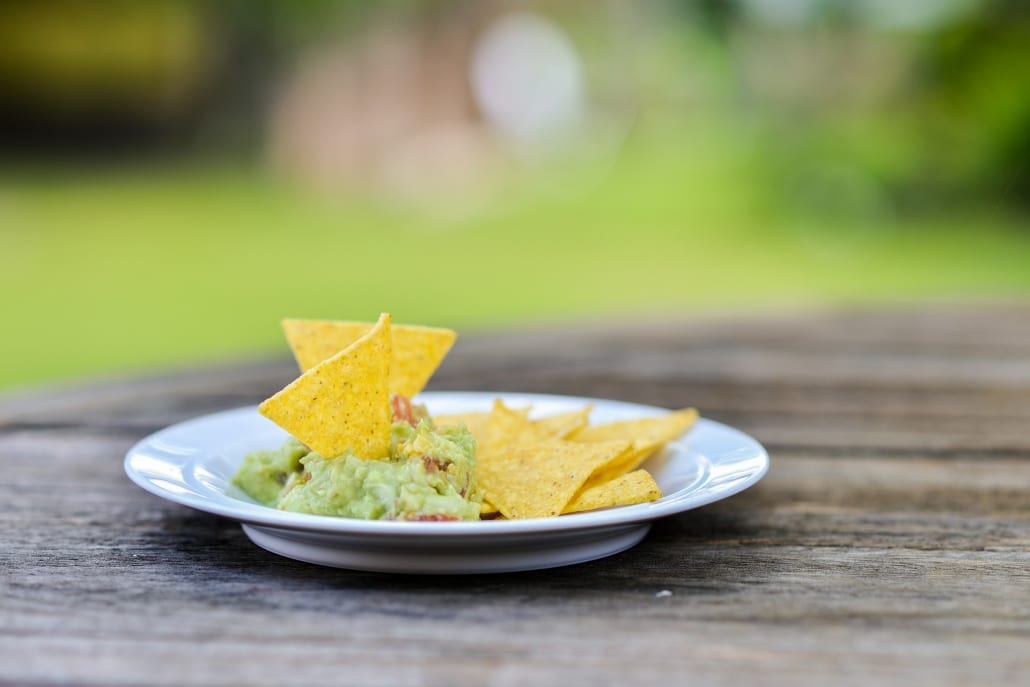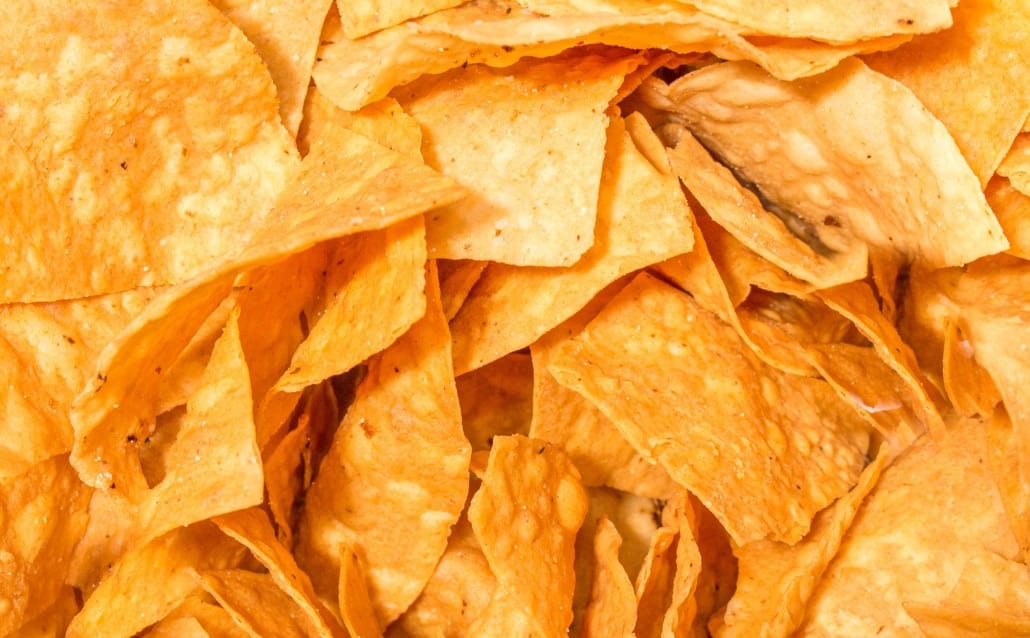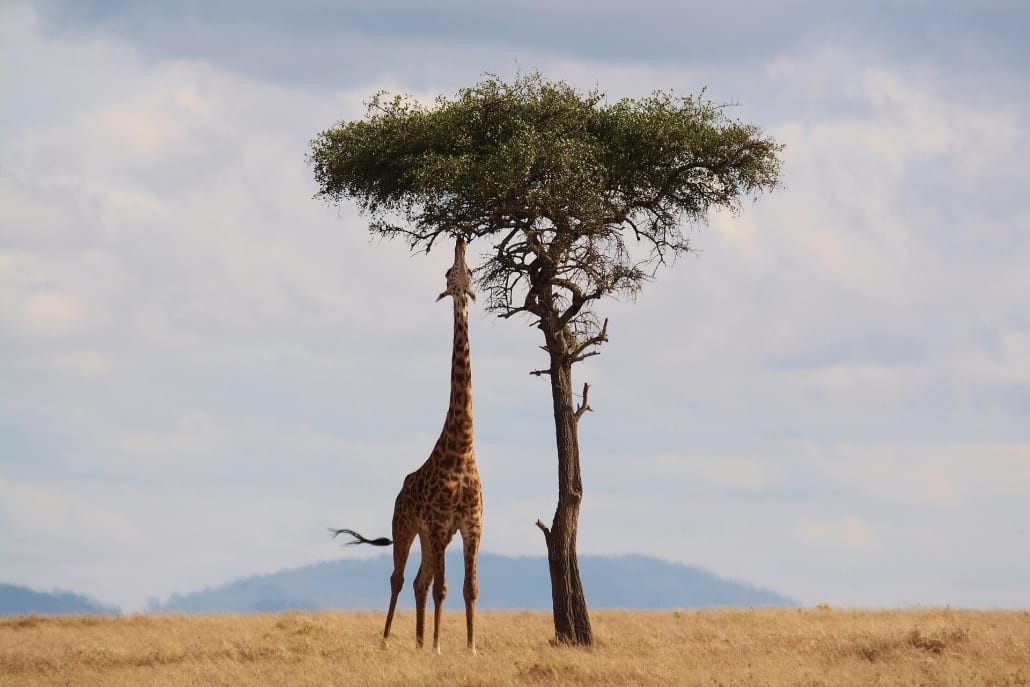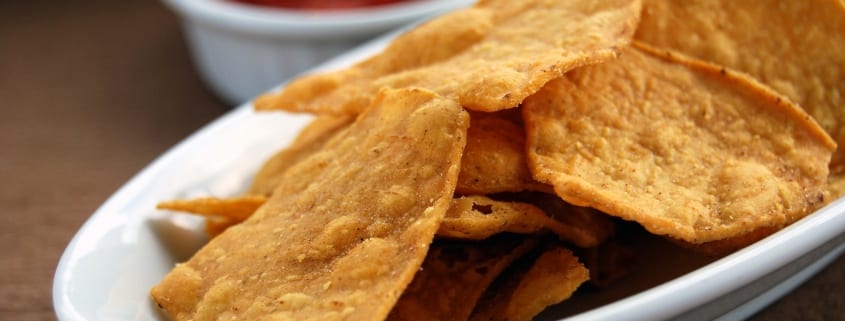Conservation Basics: Tiny, Frustrating Tortilla Chips
Rainforest Trust’s work to protect habitats for threatened species is grounded in cutting-edge conservation science. But in this series, we explore the basics of conservation science and how they inform Rainforest Trust’s scientists.
As I was trying to think of a way to explain the concept of species distribution, I struggled to find the right analogy. Species distribution is essentially just where a species lives, but the nuances are important for conservation decision-makers. And the nuances are weird and specific — especially when it comes to habitat fragmentation, or the splitting up of species’ distributions into smaller chunks.
So I wrestled with how to properly explain how frustrating distribution can be for conservation scientists. Until I found another frustrating medium that has many of the same properties.
See, species distribution is a tortilla chip.
In this (not perfect) metaphor, let’s imagine that guacamole is the population size of a species. More guacamole = bigger population of a species.

“Wildlife and their geographic range.”
With me? Great.
What is guacamole’s natural habitat? In the brief instance in which this metaphor is useful, the moment between dipping and chewing, the natural habitat of the guacamole is the tortilla chip. The guacamole relies on the tortilla chip, without the tortilla chip, the guacamole will never make it (to you).
Before our intervention, tortilla chips are full triangles or circles, capable of sustaining a massive heap of guacamole. Pleasant amounts of lime, red onion and avocado can go from bowl to mouth in peace. But, as anyone who has opened a bag of tortilla chips can tell you, this harmony doesn’t last.
Tortilla chips, with too much human interference, break in two. When they do, these smaller fragments don’t support half of the original guacamole volume. Smaller tortilla chips bring in less guacamole proportional to their size, reducing the total guacamole volume scooped per square inch of tortilla chip surface area. As these pieces grow smaller and smaller, it becomes more difficult to support a meaningful level of guacamole. Eventually, the pieces will become useless to the guacamole.

Tortilla chips before becoming unusable, tiny pieces.
Still with me? Awesome.
We also have to account for your thumb space in picking up guacamole. The more tortilla chip surface area your thumb covers, the less guacamole you’ll scoop. This is the effective size of the tortilla chip.
The shape of the tortilla chip also matters. A circular tortilla chip has the proportional viability to hold a heap of guacamole right in the middle. But a long, skinny tortilla chip of the same size will support less guacamole than the circular chip. You could try to pick up the same volume of guacamole, but it will keep falling off the edges.
We should also take into account the structural viability of the tortilla chip. A good tortilla chip can pile on mountains of guacamole. A sub-standard tortilla chip will break with just a hint of tension.
Conservation scientists look at geographic range by taking into account the surface area of the tortilla chips and the effective size of the tortilla chips. They further evaluate these factors by the shape, structural viability and size of the tortilla chip.
I will now try to dig out of this unending metaphor.
The surface area of the tortilla chip is the “extent of occurrence.” This is complicated, so let’s use another metaphor to explain this already convoluted metaphor. Imagine a house with many unused rooms. While the entire house exists as habitat, in reality, only a few rooms are occupied. The whole house is the “extent of occurrence,” the used rooms are what’s known as the “area of occupancy.”
The “area of occupancy” is the actual space the species uses. To bring it back to the tortilla chips, some areas (covered by the thumb) aren’t home to any guacamole. Species don’t live in every corner of their “extent of occurrence,” but they do live in every corner of their “area of occupancy.” So the thumb space would be included in the “extent of occurrence” but not the “area of occupancy.”

Does the giraffe live in every part of this landscape or just part of it? The difference is the difference between “extent of occurrence” and “area of occupancy,” respectively.
Species need safeguards from random catastrophes — like a disease or a fire. If the entire species lives in one field and that field succumbs to a sinkhole, the species is no longer. If the species lives in three fields and one field succumbs to a sinkhole, two habitats remain.
So, on a basic level, the larger the extent of occurrence and area of occupancy, the more chance a species has to make it past a catastrophe.
The shape of the protected habitat (the shape of the tortilla chip) is also important. Protected areas suffer from the “edge effects,” meaning protected land right next to unprotected land will suffer from external influence more than protected land far away from unprotected land. A circle has more area away from the border than something long and skinny, meaning more habitat further from unprotected areas.
The size of the protected habitat (the size of the individual tortilla chips) is important as well. If you had one contiguous tortilla chip and broke it up into many smaller tortilla chips, we would support less guacamole. Same goes with habitat. We call this phenomenon habitat fragmentation. Small patches of habitat have more “edge” areas and less contiguous space, supporting fewer individuals. This also fragments populations, which can lead to inbreeding.
The quality of the habitat (the structural viability of the tortilla chip) defines how many individuals a habitat can support, or carry. Some habitats can support many individuals and species, and some don’t have the same carrying capacity.

A city park, because it is smaller and prone to more disturbance will probably support a lower level of biodiversity than a vast, undisturbed landscape.
To close, I will surrender to this metaphorical quagmire.
The point of a protected area for wildlife is to support large, contiguous and sturdy tortilla chips. Rainforest Trust keeps this idea in mind with every protected area. We’ve protected both large, contiguous areas in themselves in addition to securing gaps between areas to create new vast stretches of protected land.
Because without practical chips, we have no guacamole and the consequences of breaking our bag of tortilla chips (the planet) into tiny, frustrating pieces are dire.
So let’s stop guacamole from going extinct.






